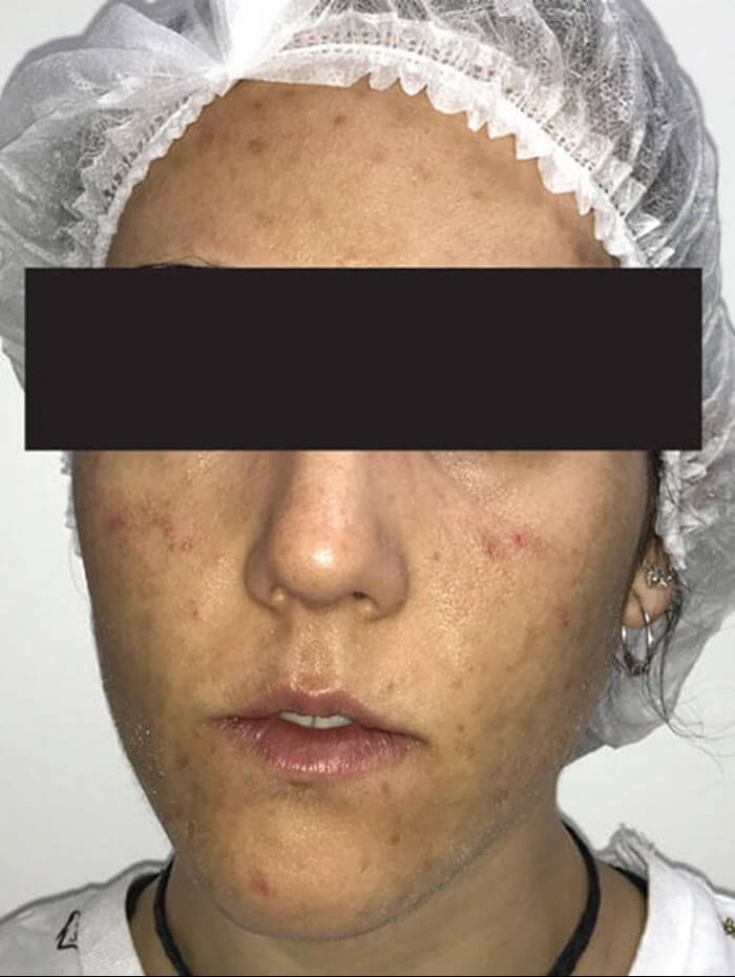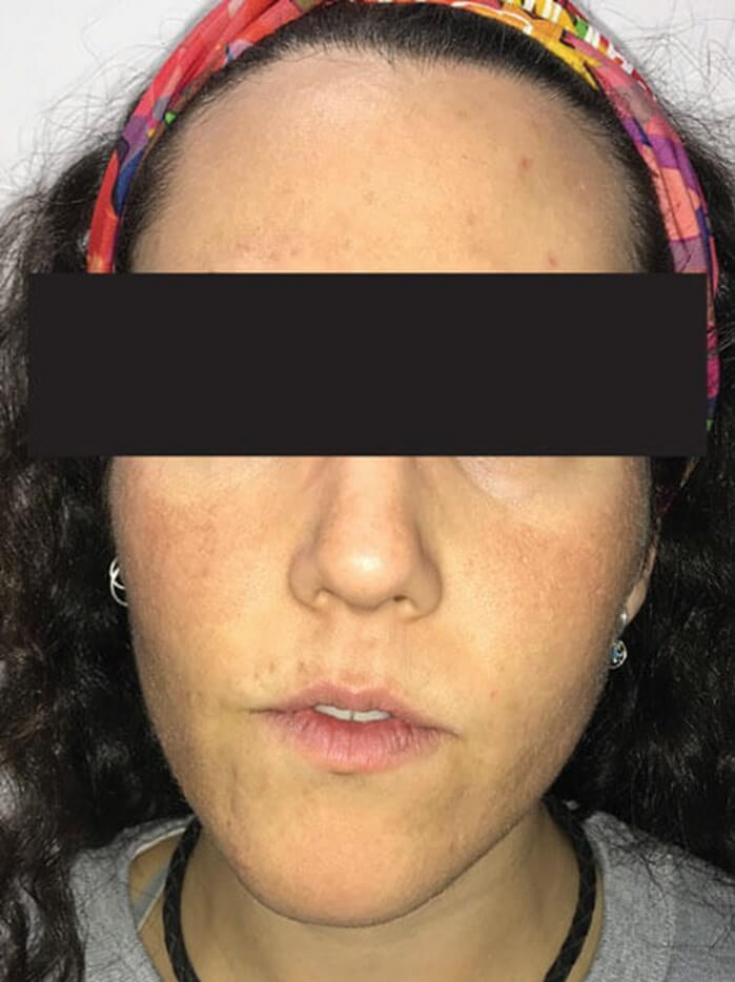Acne vulgaris – common worldwide chronic skin disease. According to the Global Burden of Disease study, approximately 85% of young people aged 12-25 have acne. This disease affects the pilosebaceous complex of the skin and is non-inflammatory (open and closed comedones) or more often inflammatory (papules and pustules) in nature. It is well known that acne can negatively affect the psychological state of any patient, regardless of the severity and severity of the disease.
This article by estet-portal.com shows a case from the practice of Dr. Paloma Cornejo Navarro :
According to the current consensus, in almost all patients with acne, a combination of topical retinoids and topical antimicrobials is recommended as first-line therapy. This approach is more effective than any of the monotherapies, since it allows you to neutralize several pathogenic factors at once.
Combined approach to the treatment of acne scars: the possibilities of mesotherapy and PRP
Combination therapy for acne vulgaris: topical retinoids + hardware techniques
Follow us on
Instagram!
The patient was offered a combination of topical retinoids, antibiotics, laser and IPL therapy as a treatment. following pattern:
• topical retinoids + clindamycin, alternating with a depigmenting cream containing kojic and phytic acids, as well as arbutin;
• four treatments of non-ablative laser (FRAX 1550) and IPL-therapy (on the Nordlys machine) with a frequency of once a month. In addition, the patient was advised to use oil-free cosmetics.
All procedures were performed after application of a topical anesthetic (7% lidocaine + 7% prilocaine + 6% tetracaine).
The results of LED therapy in acne treatment: a case report
All procedures were performed after applying a topical anesthetic (7% lidocaine + 7% prilocaine + 6% tetracaine).
The results of LED therapy in acne treatment: a case report
All procedures were performed after applying a topical anesthetic (7% lidocaine + 7% prilocaine + 6% tetracaine). 
The results of LED therapy in acne treatment: a case report

Fig. 1: patient before treatment
Fig. 2: patient after combination therapy with topical retinoids, antibiotics and laser/IPL therapy filter VL (555-950): double pulse 2.5 ms, fluence (F) – 4 J, delay – 10 ms;
treatment of acne vulgaris.
The patient was completely satisfied with the results of the treatment.
Second procedure:
• filter VL (555-950): single pulse 9 ms, F – 14.5 J;
• then – FRAX 1550, stain – 10 mm, F – 55 J, pulse duration – 5.5 ms, five passes.
Third procedure:
• filter PR (530-750): double pulse 2.5 ms, F – 4 J;
• then – FRAX 1550, stain – 10 mm, F – 55 J, pulse duration – 5.5 ms, five passes.
Fourth procedure:• only FRAX 1550, spot – 10 mm, F – 60 J, pulse duration – 6 ms five passes.
Working with acne from Roman Shkolny: drug therapy and laser techniques
significant improvement in vascular and erythematous component, reducing the number of acne elements, improving the quality and smoothing the texture of the skin. The patient was completely satisfied with the results of the treatment.
Adapted from The PMFA Journal.improving the quality and smoothing the texture of the skin. The patient was completely satisfied with the results of the treatment. Adapted from The PMFA Journal.
improving the quality and smoothing the texture of the skin. The patient was completely satisfied with the results of the treatment. Adapted from The PMFA Journal. Watch us on YouTube:






Add a comment